Contractor Comment: Arson attack ends wretched baling campaign
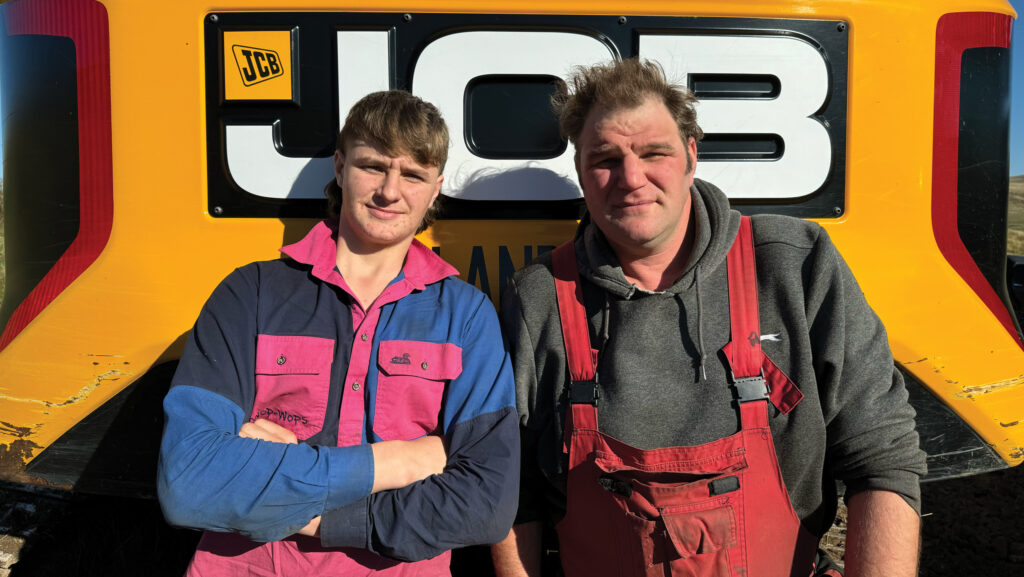 Daniel Freeland-Cook (right) with nephew Thomas © MAG/Oliver Mark
Daniel Freeland-Cook (right) with nephew Thomas © MAG/Oliver Mark Borders contractor Daniel Freeland-Cook faced a battle with the elements this summer, with both fire and water conspiring to scupper his straw baling campaign.
Relentless rain meant crop moisture remained at almost unbale-able levels throughout, and the straw wasn’t even safe once packed and stacked – an arson attack wiping out a 150t stash in a matter of minutes.
The family’s farming enterprise sources its 800t of bedding material on a muck-for-straw trade deal with several local arable farms, some of which Daniel is contracted to round bale.
He ended up producing triple his usual tally, with the straw simply too wet to press into 3x4ft squares.
See also: Contractor Comment: Warranty dilemmas and pricey pickups
About the contractor
Daniel Freeland-Cook runs the contracting arm of his family’s beef and sheep business based in Yetholm in the Scottish Borders.
Farm facts
Cliftoncote Farm, Yetholm, Scottish Borders
- Farm 2,400ha in four contract farming agreements across seven sites
- Cropping Mainly grass and green crops such as kale and fodder beet
- Stock 5,000 ewes, 1,600 ewe hogs and up to 8,000 lambs; 120-head Hereford and Saler suckler herd
- Main contracting services Grass reseeding and harvesting, green crop sowing, livestock management, forestry track construction, maintenance, other groundworks
- Staff Daniel; brother Allistair and his wife, Clair; niece Emma; nephew Thomas; a full-time shepherd; seasonal tractor drivers and lambing help; plus Daniel’s parents to help with admin
“I was concerned they’d turn to bricks and wouldn’t go through the bedding machine, so we ended up making 1,500 round bales with our fixed-chamber McHale Fusion.”
“We had to keep within a day or so of the combine to catch the straw before it got wet, so it was very raw – at least half of it was ordinary at best,” says Daniel.
“But we definitely didn’t want to be shaking out huge swaths left by a 35ft Claas rotary; in some cases, we had to accept moisture in the mid-20s, rather than risking it getting damper again.
“I certainly didn’t need my new moisture probe to tell me it wasn’t really fit.”
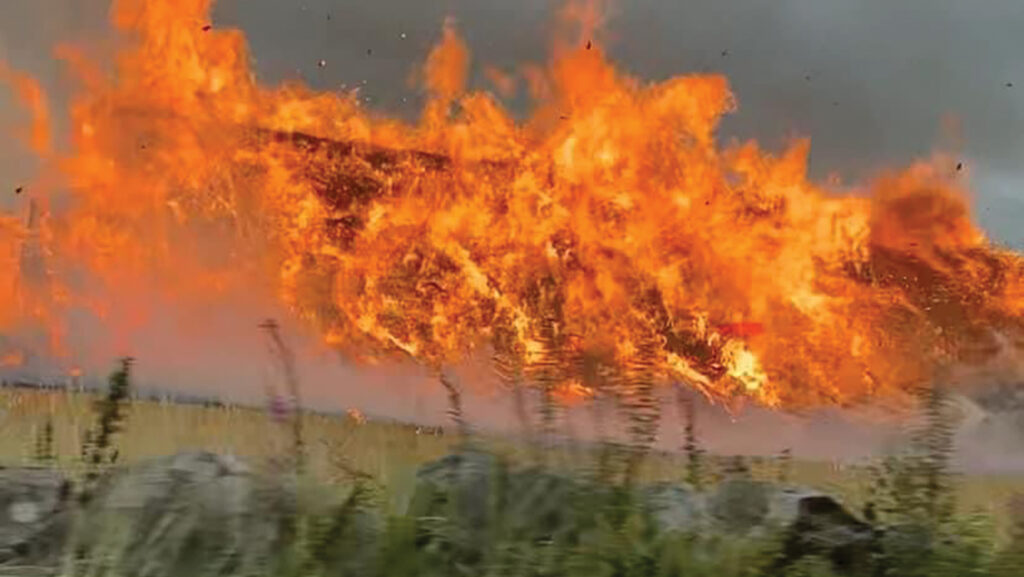
© Freeland-Cook
Spring oat straw was the worst offender, bringing back memories of his father’s challenges harvesting a couple of fields 40 years ago.
“That crop followed turnips, which naturally slow the ripening process.
“I remember him setting out to harvest them in November with his cabless 12ft Massey 525 – snow on the hilltops, hot water bottles stuffed down his army trenchcoat, Bullseye wellies on his feet, and his pipe well stoked,” he recalls.
“But whenever our neighbour saw him cutting, he’d come and help with his little combine – never invited but always welcome.”
Daniel recently found this farming camaraderie to be very much alive and kicking.
Having taken three weeks to get some of his better straw baled and stacked near Kelso, the whole lot went up in flames.
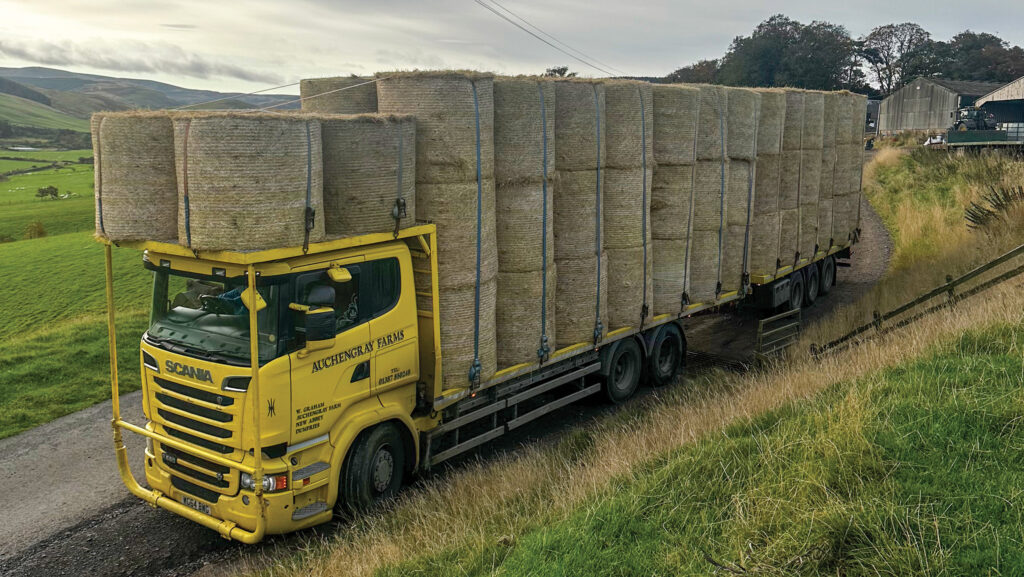
© Freeland-Cook
Umpteen phone calls followed from farmers – some he knew, some he didn’t – offering straw to make sure he could get by.
“We always carry a surplus, so we’ll manage, but it was pretty humbling to get that sort of support,” he says.
Plenty of grass
Despite the testing weather, Daniel managed to hit his annual 12,000-bale target, most of which was silage. Miraculously, he even managed to make some hay.
“We’ve sold about 300 bales so far, which has helped recoup the cost of silage wrap. And we’ve tucked a few in the back of the shed, which I’ll happily forget about until a lean year.”
An abundance of grass has driven decisions to increase stock numbers and cut down on fodder beet, with the crop not part of the rotation for the first time in a decade.
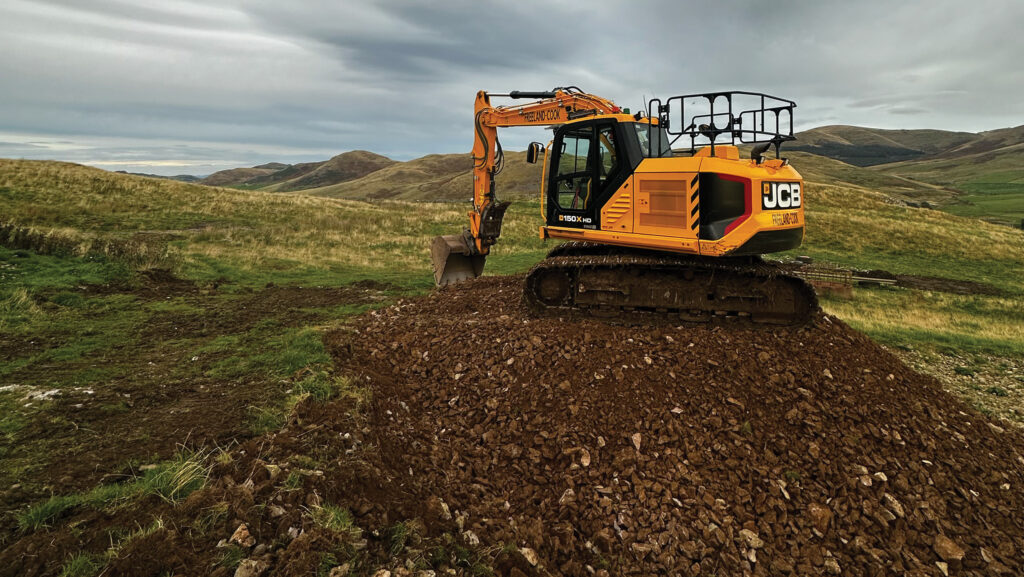
© Freeland-Cook
Though it tended to yield well, and the contractor was well geared up with three trailed harvesters, he could do nothing about the dodgy weather – conditions only made worse given the farm’s undulating ground.
“The ideal approach would be to have a small harvester of our own to lift only when we need it – but we’ve got too much other stuff going on.”
And, with so much silage in stock, beet needn’t make up such a significant portion of cattle rations.
“We had been giving each beast 10-15kg of beet a day, effectively halving their silage consumption,” he adds. “So, it makes sense to cut back – particularly when we’ve so much grass.”
However, it won’t be entirely off the menu. Rather than going through the rigmarole of growing and storing it himself, someone else will do it for him on contract.
“We’ll probably buy about 500t for the store cattle; the difference is that we won’t be grazing any straight out of the ground. But we grow plenty of kale to make up for the lost beet acreage.”
“As we’re buying it on a per tonne basis ex farm, we can haul it in as we need it. Plus, it frees up another 20ha to grow grass and green crops.”
New telehandler
After eight years of loyal service, time is up for the firm’s 20-year-old John Deere 3215 telehandler.
Before wielding the axe, Daniel priced up the cost of fettling it back into working condition, but the numbers simply didn’t stack up.
“It has been seriously reliable, but it’s seen better days: the bonnet’s hanging off, and sorting the wear plates, injectors and oil leaks was going to cost at least £15,000 – a figure that might have quickly turned into £25,000 once the work had begun,” he says.
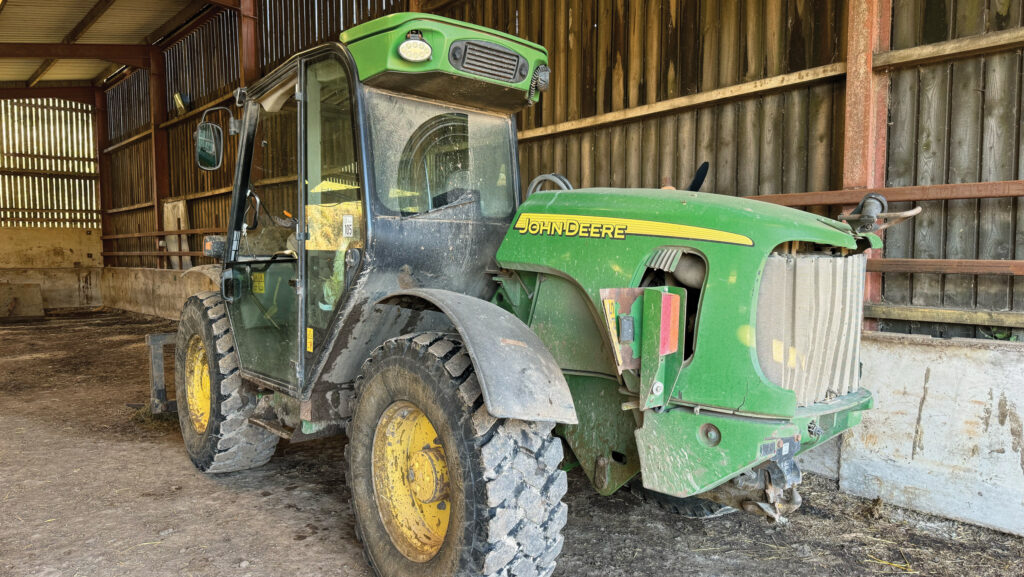
© MAG/Oliver Mark
“That sort of money would only increase the machine’s value by a few grand, so it made no sense.”
Having been bought for just £15,000 and subsequently clocked 8,000 hours, it was sold for £13,500, representing outstanding value for money.
Its replacement is a 21-plate JCB 538-60 Agri Xtra on 3,000 hours, picked up for £65,000.
“It’s a pocket rocket – 150hp in a small, nimble package – and it’s top spec so we’ve got cameras on the back, LED lights and full steel plate protection underneath.
“Plus, it’s on industrial tyres. Putting them on the John Deere was one of the best things we ever did – only 50% wear and a single puncture in over four years.”
The JCB got the nod over a 2,000-hour Kramer being offered by local Deere dealer Sherriffs.
“We liked the Kramer’s hydostatic transmission, but the engine was smaller, it didn’t have LEDs, and the hydraulics were painfully slow,” he adds.
Hedgecutting
Also new for this year is a hedgecutter – an £8,000 McConnel PA5570 – despite Daniel’s antipathy towards the job.
There were two main drivers for his change of tack: the proliferation of hedge laying schemes through the valley, and a frustration at the state of hedgerows and verges along the local single-track roads.
Previously, he’d been paying two contractors to take care of the farm’s bushwhacking, at a total cost of £2,000/year.
By taking it in-house, he has both carved off that expense and added another £2,000’s worth of contracting work, making for an appealing £4,000 swing.
“Although I said I would never buy a hedger, that was always from the perspective of making money as a contracting operation.”
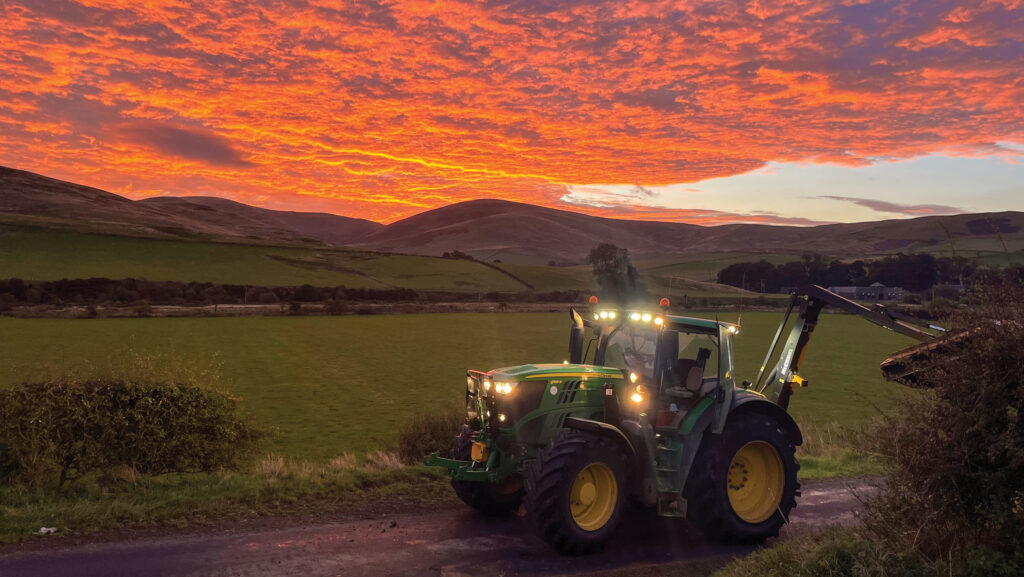
© Freeland-Cook
“My motivation is less about profit and more to give us control over the hedges around our farms.”
He intends to run it for four weeks – about 200 hours – in September and October when ground conditions are reasonably forgiving, leaving the roads clearer through winter and reducing the chance of overgrown branches damaging machines.
Contracting work is charged at £45/hour – £30 for the tractor, £3 for fuel and £12 for the trimmer.
“Hedging on hill ground especially, with ‘rig and furrow’, sheep drains and slippery slopes to deal with, is not easy work.
“But with so many hawthorn hedges going in, there’s going to be a lot more to do,” he says.
“It’s a good example of how our work is changing as environmental schemes kick in, forcing us to jump through different hoops – whether it’s more hedgerows, deferred grazing, or new arrangements with arable farms.”
Next on the shopping list is a new rake… or a merger.
“We’re due to change the 9m rake in the spring and I like the idea of the merger, though none of our customers would be loving the idea of us doubling our rates to justify one.”
One option now off the table is a front-mounted rake, which, Daniel has concluded, wouldn’t give the crop enough time to dry, nor leave space to run a swath roller or carry the 400 bales’ worth of plastic required for a day’s work.
“In reality, we’ll probably go like-for-like, but the price of a replacement has probably risen from £18k to £25k in seven years.”
On the hills
While grass has been growing abundantly at Cliftoncote Farm, so too have the hundreds of acres of hillside bracken.
“It’s getting out of hand – gone are the days of the hills being properly managed, whether it’s drainage, liming or bracken control.
“There’s never enough money left for all that remedial work,” he says.
“The bracken beds are completely unproductive, they are taking over the grazing area and, when you’re trying to move sheep, 200 of them might disappear into a 5ft tall bed and only 50 come out the other side.”
Previous control measures on the steepest ground include burning the worst beds as soon as new season growth appears and using a helicopter to spray now outlawed Azulox herbicide.
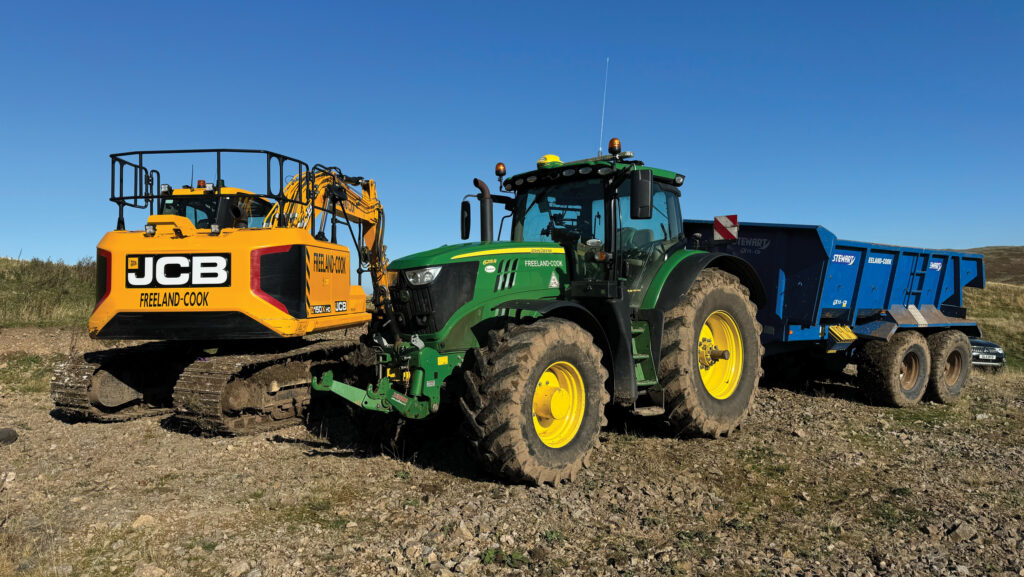
© MAG/ Oliver Mark
“It did a great job and it’s a shame that it’s been banned, particularly as nothing eats bracken and there’s no chance of it getting into the food chain.”
Looking forward, Daniel is sizing up the prospect of recruiting a drone contractor to spray glyphosate over the worst infestations.
“There’s nothing but bracken in those patches and the last time we sprayed it we had loads of foxgloves appear, so it might actually benefit the hill land.”
The other option is to use a “bracken basher” – a spiked crumbler bar – behind one of the tracked ATVs.
But it’s dangerous work, with ferociously steep slopes, and hidden stones, drains and badger sets lurking beneath.
“It needs spraying in July, so we have a few months to consider the legality and cost effectiveness of the options.
Fortunately, our landlord, Roxburgh Estate, is happy to contribute to the work, which is helpful given the farm is on a short three-year tenancy that doesn’t give us a whole lot of security as far as investing in the land goes.”
In the meantime, Daniel will be busy in the hills with the digger.
A surge of work followed the damage wrought by Storm Arwen three years ago, and with the tracks now laid and trees harvested, landowners are itching to restock with a new crop.
It means there’s a backlog of ground preparation and drainage work that will keep him busy through this winter and beyond.
“I’ve got more mounding work than I can manage, but it’s a feast and famine job and I can’t justify investing in more men and machines just for a year,” he says.

